

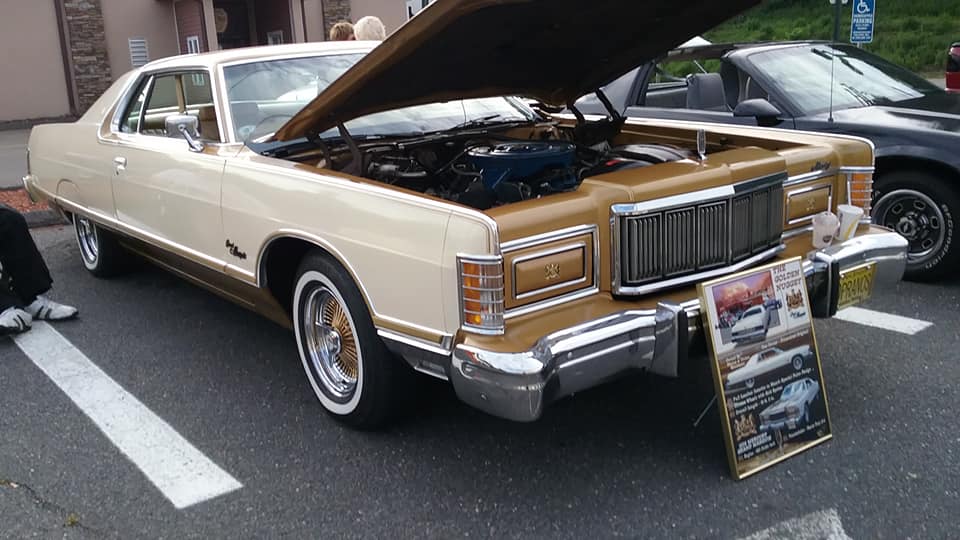
AJ’s Car of the Day: 1975 Mercury Grand Marquis Coupe
Car: Mercury Grand Marquis Coupe
Year: 1975
What makes it special: Marquis was a model line of entry-level luxury vehicles that was marketed by the Mercury division of Ford Motor Company from 1967 to 1986, recieving its name from a French nobility title, Marquis was sold across four generations as the divisional counterpart of the Ford LTD. Initially introduced as the flagship Mercury range, the Marquis line was expanded to include the Mercury Grand Marquis slotted above it, with the Mercury Colony Park serving as a station wagon variant. The first three generations of the Mercury Marquis were full-size vehicles.
What made it famous: For 1973, the Marquis received a minor restyling with a boxier look, giving it new protruding energy-absorbing “5-mph” bumpers and a new roofline. The 1975 models were slightly revised to look longer than the boxier 1973-1974 range. The Grand Marquis was introduced as a luxury trim line in 1975 when the Monterey series was dropped and all full-size Mercury’s took the Marquis name. The Grand Marquis was a trim level in its own right. It was also available prior to 1975 on Marquis Brougham which consisted of leather seats and trim. The 360 hp, 460 Big-Block V8 was again available on this generation and the 400 Cleveland replaced the 429 as the top engine in 1974. The 460 was standard on the Brougham and Grand Marquis through 1977. Paired with the 400 and 460 V8’s was the 3-speed C6 “Select-Shift” automatic.
Why I would want one: It’s a nice alternative to the usual Cadillac’s, etc as a luxury vehicle, plus you can’t get a Mercury anymore.
Fun fact: As Ford transitioned its product ranges to front-wheel drive, the Marquis was withdrawn after the 1986 model year, replaced by the Mercury Sable, which was the Mercury counterpart of the Ford Taurus.

AJ’s Car (Or in this case, Truck) of the Day: 1979 Dodge “Lil’ Red Express” Pick-up
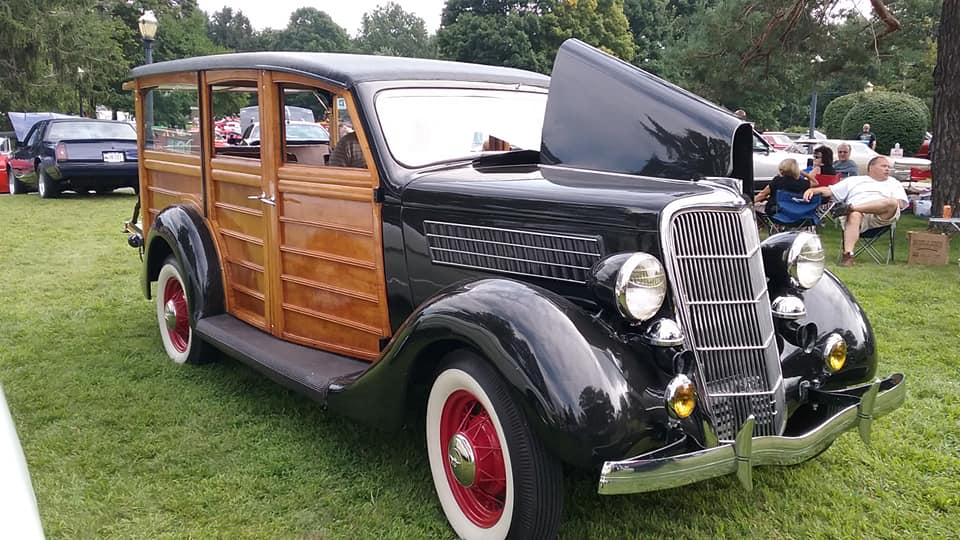
AJ’s Car of the Day: 1935 Ford “Model B” Woody Wagon
Car: Ford Model B Woody Wagon
Year: 1935
What makes it special: “Woodies” were a type of station wagon where the rear car bodywork is constructed of wood or is styled to resemble wood elements. Originally, wood framework augmented the car’s structure. Over time manufacturers supplanted wood construction with a variety of materials and methods evoking wood construction, including infill metal panels, metal framework, or simulated wood-grain sheet vinyl bordered with three-dimensional, simulated framework. As a variant of body-on-frame construction, the woodie as a utility vehicle originated from the early practice of manufacturing the passenger compartment portion of a vehicle in hardwood. Woodies were produced as variants of sedans and convertibles as well as station wagons, from basic to luxury. They were typically manufactured as third-party conversions of regular vehicles, some by large, reputable coachbuilding firms and others by local carpenters and craftsmen for individual customers.
What made it famous: The 1935 Ford was a refresh on the popular V8-powered Ford. The four-cylinder Model A engine was no longer offered, leaving just the 221 cu in V8 to power every Ford car and truck. The transverse leaf spring suspension remained, but the front spring was relocated ahead of the axle to allow more interior volume. The body was lowered and new “Center-Poise” seating improved comfort. Visually, the 1935 Ford was much more modern with the grille pushed forward and made more prominent by de-emphasized and more-integrated fenders. The wooden panels were manufactured at the Ford Iron Mountain Plant in the Michigan Upper Peninsula from Ford owned lumber. Two trim lines were offered, standard and DeLuxe, across a number of body styles including a base roadster, five-window coupe, three-window coupe, Tudor and Fordor sedans in flatback or “trunkback” versions, a convertible sedan, a woody station wagon, and new Model 51 truck.
Why I would want one: Woody wagons are just fun and cool. You can’t help feeling the “surfer-vibe” when you see one.
Fun fact: An oil pressure gauge costing $4 and two windshield wipers were optional, but if you got the optional radio, it replaced the ash tray.
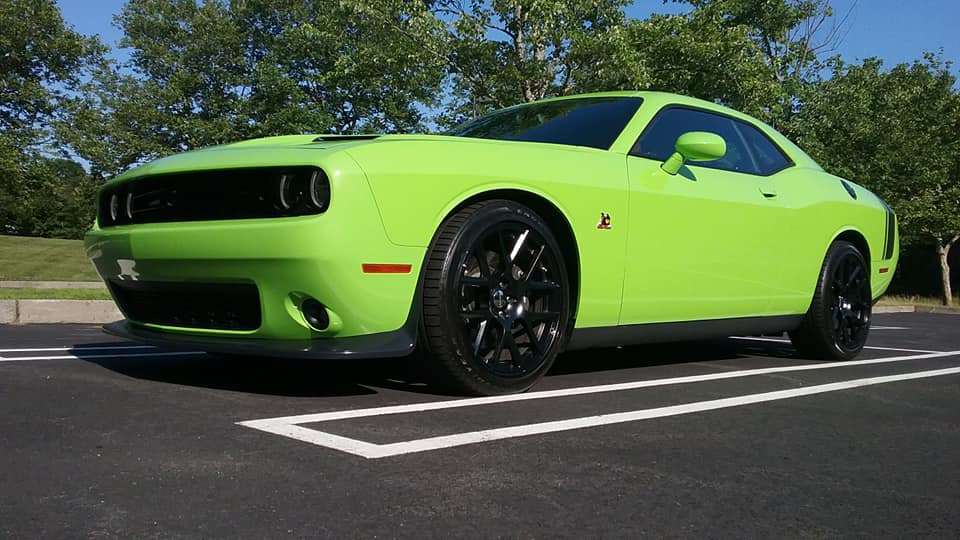
AJ’s “Badass Friday” Car of the Day: 2015 Dodge Challenger R/T “Scat Pack”
Car:Dodge Challenger R/T “Scat Pack”
Year: 2015
What makes it special: The Challenger name was used for three different generations of automobiles, two of those being pony cars, produced by Dodge. However, the first use of the Challenger name by Dodge was in 1959 for marketing a version of the full-sized Coronet Silver Challenger. From 1970 to 1974, the first generation Dodge Challenger pony car was built using Chrysler’s E-platform in hardtop and convertible body styles sharing major components with the Plymouth Barracuda. From 1978 to 1983, it was a badge engineered Mitsubishi compact car. The third and current generation is a pony car that was introduced in early 2008 originally as a rival to the evolved fifth generation Ford Mustang and the fifth generation Chevrolet Camaro.
What made it famous: The name “Scat Pack” was dug up from the days of Mopar glory, used to denote the best Dodge’s in one group. To qualify as a “Scat Pack,” the model had to run a quarter-mile in 14 seconds or under. It included the Charger R/T, Dart GTS and Super Bee, which is where the angry cartoon bee logo originates from. The Scat Pack falls in-between the R/T and SRT models. It can be considered an “SRT-Light” because you get the SRT’s larger 6.4-liter Hemi V8 with 485 hp and 475 pound-feet of torque, plus attractive exhaust, appearance package and Brembo brakes, but not the SRT’s adjustable suspension of the larger six-piston Brembo brakes or a few other goods. It’s backed by your choice of a 6-speed manual or 8-speed automatic transmission. The 2015 Scat Pack had a 0-60 test time around 4.5 seconds and a quarter-mile test time in the low-12’s.
Why I would want one: Actually, have one. That’s mine in the photo. After wanting a Challenger since their 2008 model debut, I finally got one in 2017.
Fun fact: For the 2019 model year, Dodge released the Challenger Redeye with 797 horsepower as well as the Scat Pack 1320 with 485 horsepower 6.4L Chrysler Hemi Engine.
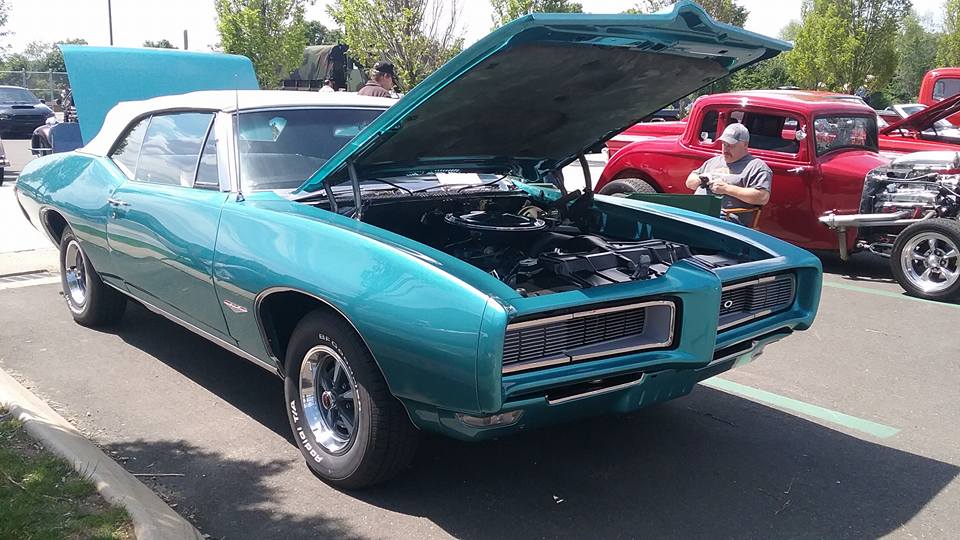
AJ’s Car of the Day: 1968 Pontiac GTO Convertible (w/Endura Nose)

AJ’s Car of the Day: 1981 DeLorean DMC-12
Car: DeLorean DMC-12
Year: 1981
What makes it special: The DMC-12, most commonly referred to simply as “The DeLorean” was the only model ever produced. It was classified as a sports car originally manufactured by John DeLorean’s DeLorean Motor Company (or DMC ) for the American market from 1981 to 1983. The car featured gull-wing doors and an innovative fiberglass body structure with a steel backbone chassis, along with external brushed stainless-steel body panels. It became widely known and iconic for its appearance, and because a modified DMC-12 was immortalized as the DeLorean Time Machine in the “Back To The Future” movie franchise.
What made it famous: The DMC-12 features a number of unusual construction details, including gull-wing doors, unpainted stainless-steel body panels, and a rear-mounted engine. The body design of the DMC-12 is brushed SS304 stainless steel. Except for three cars plated in 24-karat gold, all DMC-12’s left the factory uncovered by paint or clearcoat. The DMC-12 features heavy doors supported by cryogenically preset torsion bars and gas-charged struts developed by Grumman Aerospace to withstand the stresses of supporting the doors. DMC-12 doors featured small cutout windows, because full-sized windows would not be fully retractable within the short door panels. The engine is a Peugeot–Renault–Volvo or PRV, 2.85 L V6, rated at 130 hp @ 2750 rpm of torque, that was designed and built under special contract with the DeLorean Motor Company. The 5-speed manual transmission, also designed by PRV, was built at the Renault facility.
Why I would want one: Although not the fastest, or considered supercar, these are a piece of automotive history, and the story about the rise and fall of the DeLorean Motor Company could easily be the subject of it’s own movie.
Fun fact: On January 27, 2016, DMC in Texas announced that it planned to build about 300–325 replica 1982 DMC-12 cars, each projected to cost just under $100,000.
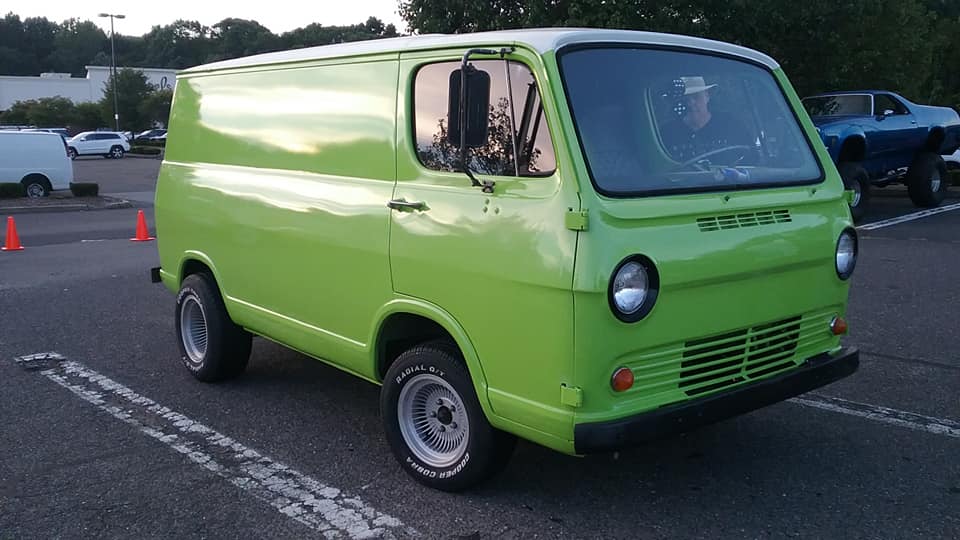
AJ’s Car of the Day: 1965 Chevrolet “Chevyvan” G10 Van
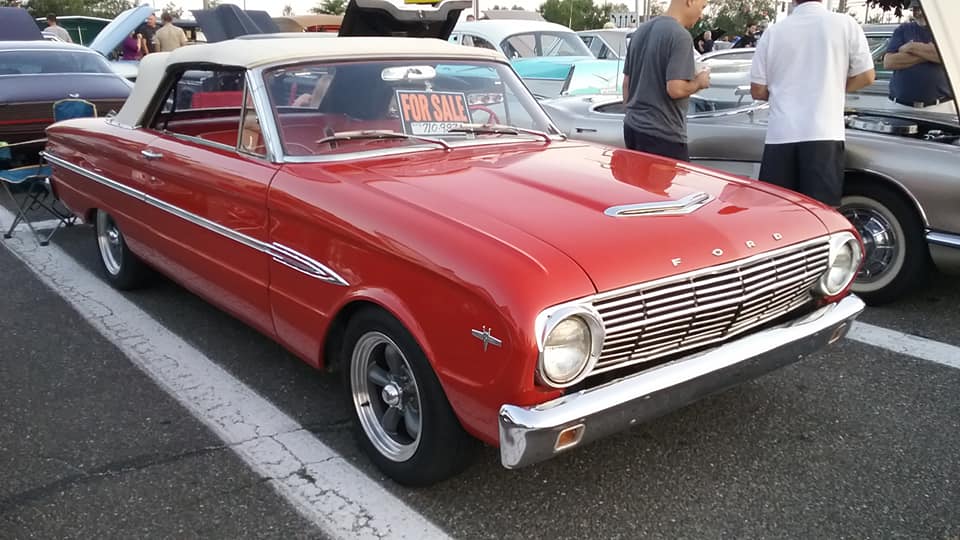
AJ’s Car of the Day: 1963 Ford Falcon Futura Convertible
Car: Ford Falcon Futura Convertible
Year: 1963
What makes it special: Ford’s Falcon was produced from 1960 to 1970 across three generations. It was a sales success for Ford initially, outselling rival compacts from Chrysler and General Motors introduced at the same time. Falcon was offered in two-door and four-door sedan, two-door and four-door station wagon, two-door hardtop, convertible, sedan delivery and Ranchero pickup body configurations. For several years, the Falcon name was also used on passenger versions of the Econoline van.
What made it famous: In 1963, even more models were available. There was now a four-door Futura and a Deluxe wagon. Futura Convertible and Futura Sports Convertible models were also included in the 1963 range. Later, hardtops, and the new “Sprint” model were introduced. Halfway through the model year, the Fairlane’s 164 hp “Challenger” 260 cu in V8 engine was offered for the first time. The Falcon was climbing in trim level from its budget beginnings to get more profit from the line. The only time a V8 option was available in a first-generation Falcon was the 1963½ model, and they were produced in very limited numbers, like the Sprint two-door hardtop and Sprint convertible. These first-generation Falcon Sprint cars were the basis for the 1964½ Mustangs released by Ford one year later. Many of the interior, chassis, suspension, and drivetrain components were derived from those used on the 1963½ Ford Falcon Sprint and/or Fairlane models. Basically, the 1963½ Falcon Sprint is nearly mechanically identical to the 1964½ Mustang while being cosmetically different.
Why I would want one: I’ve always wanted a Ford Falcon, at this point any model between the years 1960 and 1968.
Fun fact: The Ford Falcon brochure featured Charlie Brown and Lucy from the Peanuts comic strip who remained until 1965

12/14/18 – Chaz and AJ Podcasts – Wrapping Up 2018, Keith’s Top 5, Scot Haney Sings
Scot Haney Sings Christmas Music
The Bad Gift Grab Bag
Ned Lamont and the COO
Boss Keith Top 5 Chaz and AJ Moments
Wrapping Up 2018